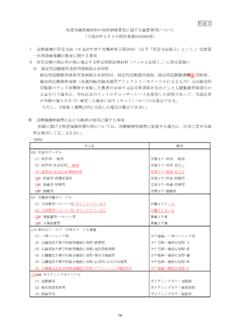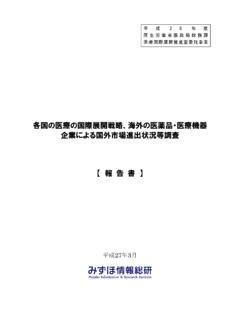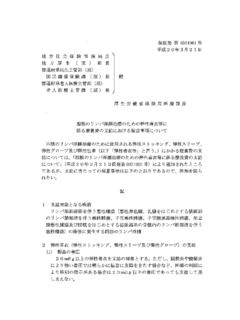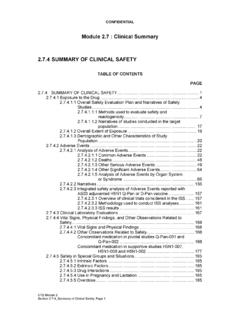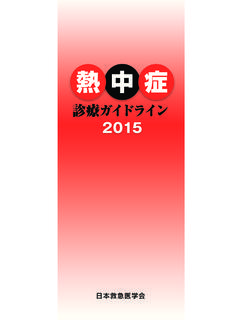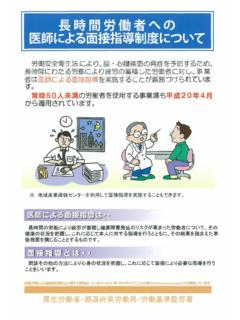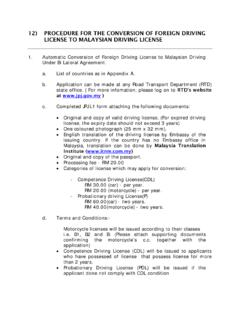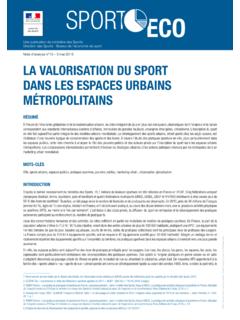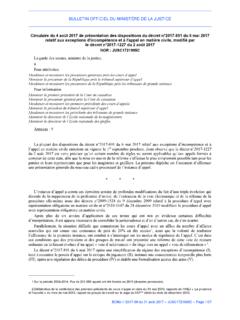Transcription of .FBTVSFTUP &OTVSF'PPE 4BGFUZ - mhlw.go.jp
1 Department of Environmental Health and Food SafetyPharmaceutical Safety and Environmental Health Bureau,Ministry of Health, Labour and WelfarePhone: 03-5253-1111 URL for the MHLW: JP http://www. EN : JP EN Kasumigaseki, Chiyoda-ku, Tokyo 100-8916 JAPANM easures to Ensure FoodSafetyDepartment of Environmental Health and Food SafetyPharmaceutical Safety and Environmental Health Bureau,Ministry of Health, Labour and Food is essential for people to maintain sustainable and healthy food safety is therefore important and many people have great concern with it.
2 The Ministry of Health, Labour and Welfare (MHLW) formulates and implements various food safety policies based on scientific knowledge in collaboration with many relevant bodies including consumers, food business operators and other stakeholders from various of Contents Scope of Food Safety Food Safety Regulatory Framework 3 Roles of Food Safety Management Organizations in MHLW 3 Measures by the Ministry of Health, Labour and Welfare 1. Food Poisoning 5 2. Imported Foods 6 3.
3 Food Hygiene Control by HACCP 7 4. Bovine Spongiform Encephalopathy (BSE) 8 5. Agricultural Chemical Residues in Foods (Positive List System) 9 6. Radioactive Materials in Foods 10 7. Contaminants in Foods 11 8. Food Additives 12 9. Health Foods 13 10. Genetically Modified Foods 14 11. Utensils, Containers and Packaging, Toys and Detergent 15 Introduction3 Food Safety Regulatory Framework A series of food safety incidents, which occurred during 2001 and 2002 such as BSE incidence and false food labeling, shook public trust in food safety and led to the restructuring of Japan's framework for food safety regulation in 2003.
4 Risk Analysis is an internationally acknowledged principle consisted of three components: 1) risk assessment assessing risk scientifically, 2) risk management implementing necessary measures based on risk assessment results, and 3) risk communication exchanging information and opinions among members, such as risk assessors, consumers and business operators. In the current framework in Japan, risk assessment body is completely separated from risk management body, and is placed into the Food Safety Commission (FSC) established in the Cabinet Office under the Food Safety Basic Act.
5 Risk management is conducted by three agencies; the Ministry of Health, Labour and Welfare (MHLW), the Ministry of Agriculture, Forestry and Fisheries (MAFF) and the Consumer Affairs Agency (CAA). They have responsibilities for developing necessary measures and regulations based on risk assessment results. Risk communication is done by all these agencies. Roles of Food Safety Management Organizations in MHLW There are various organizations under the MHLW, which include not only headquarters but also the regional bureaus of health and welfare and the quarantine stations, while ensuring cooperation with the local governments.
6 Ministry of Health, Labour and Welfare Under the Food Sanitation Act and other related laws, MHLW lays down regulations and set food safety standards for foods, food additives, pesticide and veterinary drug residues in foods, and food apparatus/containers and so on, as preventative measures and prohibits the distribution of harmful foods. MHLW works closely with other governmental agencies and local governments, and ensures proper implementation of food safety to Ensure Food Safety (risk analysis) Risk managementRisk assessmentFood Sanitation Act, etcRisk management relating to food hygieneRisk management related to agriculture and forestry, livestock management, and fisheriesMHLWMAFFFood Safety Basic Act Food Safety CommissionRisk communication- Provide information related to food safety- Ensure opportunities for stakeholders including consumers to express their opinionsFood Sanitation Act, Health Promotion Act, related to labeling of food items CAA- Conduct risk assessments- Report to the governmental organizations responsible for risk management.
7 - Monitor the state of implementation of risk management - Collect and analysis risk information from inside and outside of Japan as a central information center, Quarantine Stations- Regional bureaus of health and welfare- Local governments- Local public health centers, Regional agricultural administration offices - Food and Agricultural Material Inspection Center. Agricultural Chemicals Control Act, Feed Safety Act, etc. 4 Regional Bureaus of Health and Welfare Regional Bureaus of Health and Welfare are located in seven regions across the country; Hokkaido, Tohoku, Kanto-Shinetsu, Tokai-Hokuriku, Kinki, Chugoku-Shikoku, and Kyushu.
8 They register and inspect facilities introducing HACCP (Hazard Analysis and Critical Control Point) in cooperation with local governments and provide technical advice for hygienic practices based on HACCP approach. Also, they register private laboratories as Registered Laboratories which operate food inspection business in compliance with GLP (Good Laboratory Practice) under the Food Sanitation Act. Quarantine Stations There are 32 quarantine stations located at international seaports and airports. At the quarantine stations, food inspectors conduct document examination, inspect and monitor imported foods and related products, and guide importers on practical procedures of food import.
9 Local Governments There are 47 prefectural governments, 71 municipalities with public health centers, and 23 special wards of Tokyo Metropolis (as of April 2016). The local governments inspect local restaurants, food manufacturers and distributors. In case of an outbreak of food poisoning they investigate the cause. Based on relevant ordinances, the local governments set hygiene standards. Another function of local government is issuance of business permits for specific type of food manufacturers. If a food manufacturer violates the ordinance, the local governments suspend or revoke its permits.
10 Local governments formulate inspection and guidance plan for foods distributing in domestic marketplace. Activities according to the plan are executed by Public health of Food Sanitation PoliciesMAFF and the CAA (risk management) CAAC onsumer CommissionFood Safety Commission (risk assessment)Close collaboration among relatedgovernmental organizationsMHLW (risk management) Prefectures (47), Municipalities with public health centers (71), Tokyo s special wards (23) Public health centers (480) Regional bureaus of health and welfare (7) Quarantine stations (32) Cooperation to implement measures and policiesRegistered inspection organizationsProviding safe foodsInspection requestImported foods, on auditingimported foodsConsumersFood business operators *As of April 2016 Promotion of information and opinion exchange among stakeholders (risk communication)Total coordination- Disclosure of information on implementation of policies - Collection of information from local residents- Disclosure of information on implementation of policies - Collection of information from residents of Japan (1) Business license(2)
